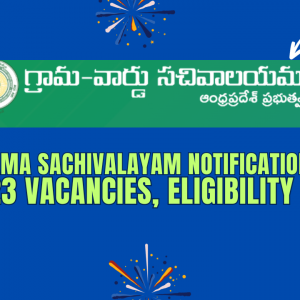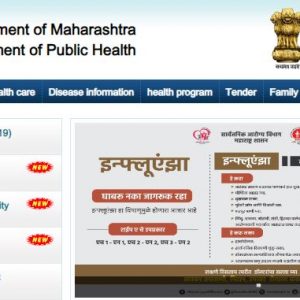Chandra Grahan 2023 In India Date And Time: Lunar Eclipse Viewing Guide

Post Contents
The celestial spectacle of Chandra Grahan, or a lunar eclipse, is set to grace the skies in India on October 28, 2023. This cosmic event occurs when the Earth passes in front of the Sun and casts its shadow on the Moon. Here is a guide to the date and time of the lunar eclipse, where to watch, its significance in Hinduism, and precautions to take during Chandra Grahan 2023.
Chandra Grahan 2023 Date And Time:
The partial lunar eclipse is scheduled for October 28, 2023, with the penumbral shadow expected to touch the moon’s surface from 11:31 PM to 02:24 AM IST. During this event, only a portion of the moon will pass into Earth’s shadow, creating a breathtaking celestial display.
Key Information:
| Chandra Grahan 2023 Details | |
|---|---|
| Event | Chandra Grahan 2023 (Lunar Eclipse) |
| Date | October 28, 2023 |
| Time | 11:31 PM to 02:24 AM IST |
Lunar Eclipse Visibility:
This Chandra Grahan 2023 will be visible from various continents, including Asia, Russia, Africa, the Americas, Europe, Antarctica, and Oceania. In India, the moon will be positioned 62° above the horizon, making it visible in the southwesterly sky. Approximately 12% of the lunar surface will be obscured around the greatest point of the eclipse at 1:45 AM.
Lunar Eclipse 2023 in India:
- Start Time (New Delhi): 11:31 PM
- End Time (New Delhi): 3:36 AM (October 29, 2023)
How to Watch the Lunar Eclipse:
- Observation Time: The lunar eclipse can be observed safely with the unaided eye between 01:06 AM and 02:23 AM IST on October 28, 2023.
- Enhanced Viewing: Use a telescope or binoculars for an enhanced lunar viewing experience.
- Live Streaming: Several YouTube channels will provide live broadcasts of the lunar eclipse for those unable to witness it in person.
Chandra Grahan 2023 Beliefs In Hinduism:
In Hinduism, Rahu and Ketu, considered unfavorable celestial bodies, are believed to cause solar and lunar eclipses. It is believed that Rahu consumes the Sun and the Moon, leading to these celestial events. Eclipses are considered inauspicious, and certain precautions are advised during the Sutak period and eclipses.
Three Types Of Lunar Eclipses:
- Total Lunar Eclipse: Moon entirely passes through the Earth’s umbra.
- Penumbral Lunar Eclipse: Moon enters Earth’s outer shadow or penumbra.
- Partial Lunar Eclipse: A segment of the Moon passes into Earth’s shadow.
The second lunar eclipse of 2023 will be a partial lunar eclipse visible in parts of Australia, the Eastern Americas, Europe, Africa, and Asia.
Precautions During Chandra Grahan 2023:
- Sutak Period: Avoid eating or drinking during Sutak. Limit meals to one Prahar or three hours for children, ill individuals, pregnant women, and the elderly.
- Pregnant Women: Stay indoors during the eclipse, avoiding handling knives or scissors.
- Sutak Pollution: Basil leaf with pre-prepared meals may reduce Sutak pollution.
- Prohibitions: Avoid oil massage, combing hair, and cleaning teeth during Sutak.
Chandra Grahan 2023 promises to be a captivating astronomical event, and enthusiasts in India are encouraged to witness this celestial dance if weather conditions permit. Whether observing it live or through online streaming, the lunar eclipse is sure to leave a lasting impression on sky gazers.
Frequently Asked Questions (FAQs):
1. What is Chandra Grahan, and how does it occur?
- Chandra Grahan, or a lunar eclipse, occurs when the Earth passes in front of the Sun, casting its shadow on the Moon. It happens when the Moon, Earth, and Sun align.
2. When is the Chandra Grahan 2023 in India, and what is the timing?
- The partial lunar eclipse is set to occur on October 28, 2023, from 11:31 PM to 02:24 AM IST.
3. Can the lunar eclipse be seen from India, and where is it visible globally?
- Yes, the lunar eclipse will be visible from India. It will also be visible from Asia, Russia, Africa, the Americas, Europe, Antarctica, and Oceania.
4. How much of the lunar surface will be obscured during the partial lunar eclipse?
- Approximately 12% of the lunar surface will be obscured during the greatest point of the eclipse, around 1:45 AM.
5. Can the lunar eclipse be observed with the naked eye, or do I need special equipment?
- The lunar eclipse can be safely observed with the unaided eye. However, using a telescope or binoculars can enhance the viewing experience.
6. Are there any live streaming options for those unable to witness the eclipse in person?
- Yes, several YouTube channels are expected to provide live broadcasts of the lunar eclipse.
7. What are the beliefs about Chandra Grahan in Hinduism?
- In Hinduism, it is believed that Rahu and Ketu, unfavorable celestial bodies, cause solar and lunar eclipses. Eclipses are considered inauspicious, and precautions are recommended during the Sutak period.
8. What are the different types of lunar eclipses, and which type is Chandra Grahan 2023?
- There are three types of lunar eclipses: total, penumbral, and partial. The Chandra Grahan 2023 is a partial lunar eclipse.
9. What is the Sutak period, and what precautions are advised during Chandra Grahan?
- The Sutak period is considered inauspicious in Hinduism. During this time, it is advised to avoid eating, drinking, and certain activities like using knives or scissors. Pregnant women are advised to stay indoors.
10. How long does the lunar eclipse last, and what is the significance of the timing mentioned for New Delhi?
- The lunar eclipse will be visible for several hours. The timing for New Delhi (11:31 PM to 03:36 AM) indicates the start and end times of the eclipse in that specific location.







